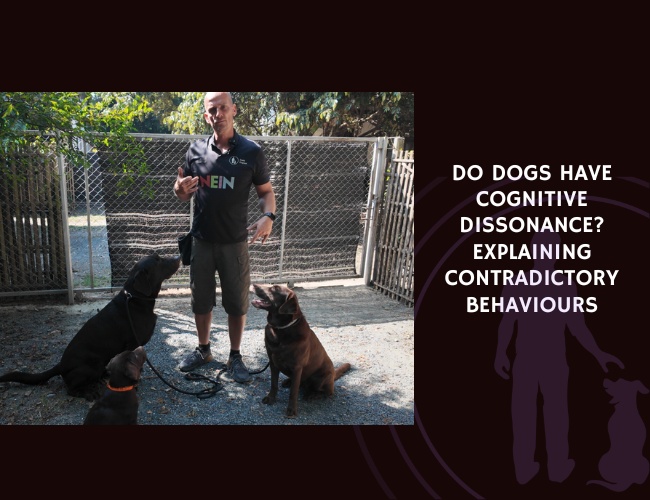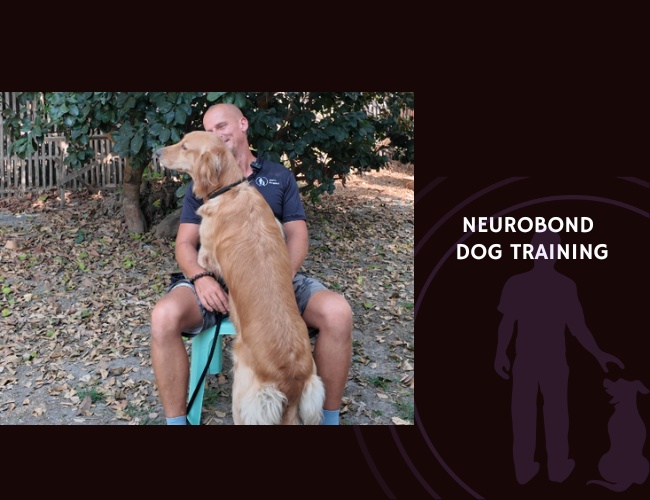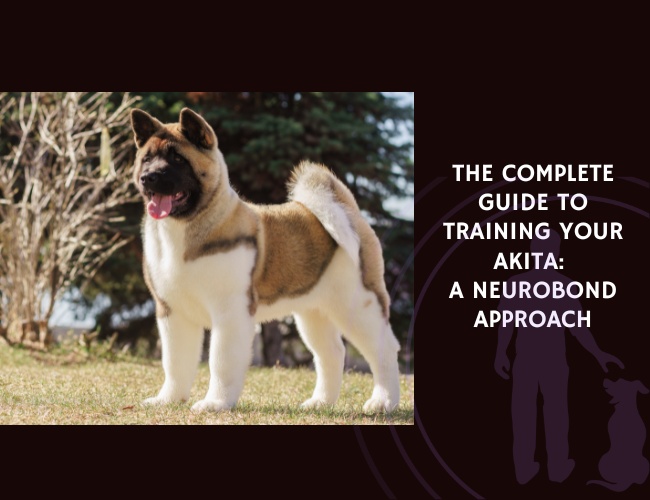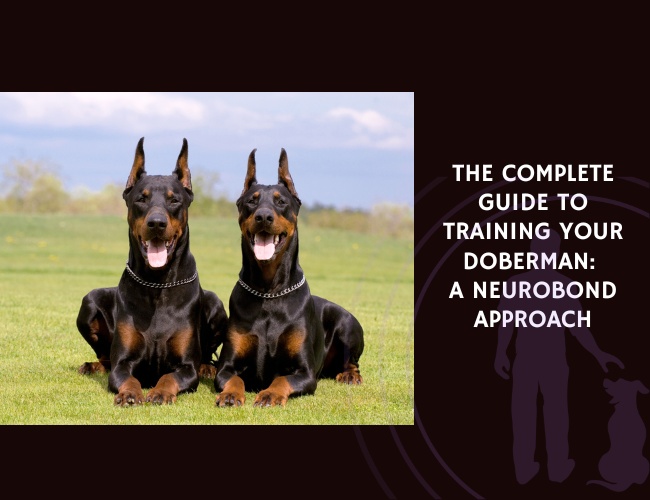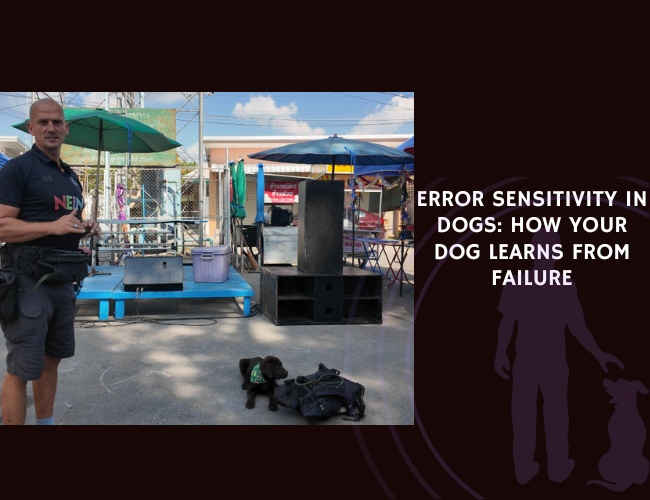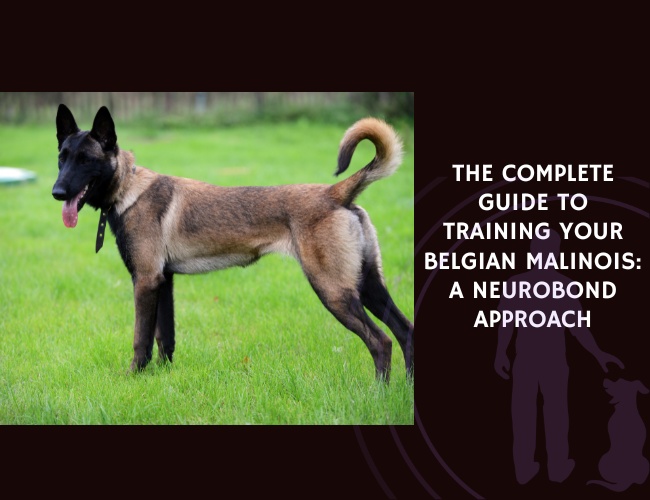Have you ever watched your furry friend hesitate at the door, desperately wanting to go outside but simultaneously cowering from the thunderstorm beyond? Or perhaps you’ve noticed your dog approaching their food bowl with excitement, only to back away with apparent anxiety? These moments of behavioural contradiction might be more than simple indecision—they could represent a canine version of cognitive dissonance, a phenomenon that reveals the remarkable complexity of your dog’s emotional and mental life.
As devoted dog owners and trainers, we often witness these puzzling moments where our companions seem caught between opposing desires or reactions. Understanding whether dogs truly experience cognitive dissonance—and how to recognize and respond to it—can transform our approach to training, deepen our bond with our pets, and ultimately improve their wellbeing. Let us guide you through the fascinating science behind your dog’s conflicting behaviours and what they mean for your relationship together.
Character & Behavior: The Canine Mind in Conflict
Understanding Cognitive Dissonance in Dogs
When we talk about cognitive dissonance in dogs, we’re exploring whether our four-legged companions can experience the mental discomfort that arises from holding contradictory beliefs, desires, or behaviours simultaneously. Unlike humans, who might consciously wrestle with conflicting thoughts, dogs process these conflicts through a unique blend of instinct, emotion, and learned behaviour.
The neurological foundation of canine cognitive processing differs significantly from our own. While dogs possess remarkable emotional intelligence and problem-solving abilities, their experience of internal conflict manifests primarily through behaviour rather than abstract thought. Your dog’s brain, particularly the amygdala (emotional processing center) and prefrontal cortex (decision-making region), work together to navigate conflicting stimuli in ways that might surprise you.
Behavioural manifestations of potential cognitive dissonance in dogs often appear as:
- Approach-avoidance behaviours (moving toward then away from something)
- Displacement activities (sudden scratching or yawning when stressed)
- Frozen postures or hesitation at decision points
- Alternating between conflicting emotional displays
Research suggests that while dogs may not experience cognitive dissonance in the human sense of conflicting beliefs, they certainly experience what scientists call “motivational conflict”—a state where competing drives create observable stress and confusion. 🧡
The Science Behind Contradictory Behaviours
Neurobiological markers provide fascinating insights into how dogs process conflicting information. Studies measuring cortisol levels and heart rate variability in dogs facing contradictory stimuli show clear physiological stress responses. This suggests that even without conscious awareness of their conflict, dogs experience genuine discomfort when caught between opposing drives.
Instinct versus learning creates one of the most common sources of behavioural contradiction in dogs. Your dog’s evolutionary heritage as a predator might drive them to chase that squirrel, while their training tells them to stay by your side. This clash between nature and nurture plays out in countless daily scenarios, from resource guarding conflicts to social interaction dilemmas.
Emotional processing pathways in dogs reveal another layer of complexity. Unlike humans, who can verbally process and rationalize conflicting emotions, dogs must navigate their internal conflicts through action or inaction. This limitation doesn’t make their experience less valid—it simply means we need to become better interpreters of their non-verbal communication.
Vocalization & Communication: How Your Dog Expresses Internal Conflict
Reading the Signs of Cognitive Dissonance
Your dog’s body language provides a rich vocabulary for expressing internal conflict, though many owners miss these subtle signals. Understanding these communications can help you recognize when your furry friend is experiencing cognitive dissonance and needs support.
Primary stress indicators that suggest internal conflict include:
- Lip licking and nose touching (when not food-related)
- Yawning in non-tired contexts
- Whale eye (showing the whites of their eyes)
- Panting without physical exertion
- Trembling or muscle tension
Displacement behaviours deserve special attention as they often indicate cognitive dissonance. You might notice your dog suddenly scratching, sniffing the ground intensely, or shaking off as if wet when faced with conflicting drives. These behaviours serve as emotional pressure valves, helping dogs cope with the stress of internal conflict.
Vocalizations during conflict can range from whimpering and whining to unusual barking patterns. Some dogs become unusually quiet when experiencing cognitive dissonance, while others may vocalize more frequently but with different tonal qualities than their typical communications.
The Language of Ambivalence
Mixed signals in body posture often reveal the depth of your dog’s internal struggle. You might observe:
- A wagging tail combined with a lowered body stance
- Ears forward (interest) while body leans backward (caution)
- Play bow followed immediately by retreat
- Approaching with a curved body path rather than direct movement
Facial expressions provide particularly nuanced information about cognitive dissonance. Dogs experiencing internal conflict often display rapid changes in facial tension, alternating between relaxed and stressed expressions within seconds. Their eyes might dart between the source of conflict and potential escape routes, while their mouth may alternate between panting and tight-lipped tension.
Understanding these signals helps us recognize that what might appear as “stubbornness” or “disobedience” could actually be your dog struggling to reconcile conflicting motivations or past experiences with present circumstances. 🐾
Training & Education: Navigating Cognitive Dissonance in Learning
The Impact of Inconsistent Reinforcement
Creating confusion through mixed messages represents one of the most common ways we inadvertently trigger cognitive dissonance in our dogs. When rules change depending on our mood, who’s present, or the situation, dogs struggle to form clear behavioural patterns. This inconsistency can manifest as:
- A dog who jumps on some family members but not others
- Begging behaviours that work sometimes but are punished at other times
- Confusion about furniture access rules that vary by context
The punishment-reward paradox occurs when dogs receive both positive and negative consequences for the same behaviour across different contexts. For instance, a dog might be rewarded for alert barking when strangers approach during walks but punished for the same behaviour at home. This creates profound confusion and can lead to anxiety-based behaviours.
Building clarity through consistency requires all family members to agree on rules and reinforcement strategies. Dogs thrive on predictable patterns, and reducing contradictory signals helps minimize cognitive dissonance. Consider creating a written “house rules” document that everyone follows, ensuring your dog receives consistent messages about expectations.
Conflict-Resilient Training Protocols
Recognizing conflict before it escalates allows trainers and owners to adjust their approach proactively. Watch for early signs like:
- Slower response times to known commands
- Increased sniffing or distraction behaviours
- Partial compliance (sitting but immediately standing)
- Stress signals during previously successful exercises
Gradual desensitization techniques help dogs work through conflicting emotions without overwhelming their coping mechanisms. Rather than forcing a fearful dog to immediately approach something they find both interesting and scary, create distance and slowly decrease it over multiple sessions. This approach respects your dog’s emotional state while building confidence.
Choice-based training methods empower dogs to navigate their own internal conflicts. By offering options rather than forcing compliance, you help your dog develop decision-making skills that reduce cognitive dissonance. For example:
- Use two-toy games where dogs choose which to engage with
- Create “consent tests” during petting or handling
- Offer escape routes during challenging training scenarios
Performance & Activities: Cognitive Dissonance in Action
Working Dogs and Conflicting Drives
Herding breeds and impulse control present fascinating case studies in cognitive dissonance. These dogs possess powerful instinctual drives to chase and control movement, yet must learn to moderate these impulses in domestic settings. The internal conflict between genetic programming and learned behaviour can create significant stress, manifesting as:
- Obsessive behaviours like shadow chasing
- Redirected herding toward children or other pets
- Anxiety when unable to fulfill their working drive
Hunting dogs in family settings face similar challenges. A pointer’s instinct to freeze and indicate prey conflicts with recall training, creating moments of visible internal struggle. Understanding these breed-specific conflicts helps owners provide appropriate outlets and training approaches.
Service dogs navigating dual roles perhaps face the most complex cognitive challenges. They must suppress natural dog behaviours while working, then transition to “just being a dog” during off-duty time. This constant switching between behavioural sets requires remarkable cognitive flexibility and can occasionally result in confusion or stress.
Competition and Performance Anxiety
The perfectionism paradox affects many competition dogs who want to please their handlers but fear making mistakes. This creates a cognitive dissonance loop where:
- The desire to perform conflicts with fear of failure
- Past negative experiences clash with current positive training
- High drive competes with anxiety-induced inhibition
Environmental pressure in competition settings can amplify cognitive dissonance. Dogs may perform flawlessly at home but struggle in novel environments where conflicting stimuli compete for their attention. The excited energy of competitions, combined with handler stress, creates a perfect storm for behavioural contradictions.
Successful handlers recognize these challenges and build confidence through systematic exposure, ensuring their dogs develop resilience against cognitive dissonance in high-pressure situations.
Conflicted. Complex. Canine.
Your dog’s hesitation reveals more than indecision.
When they waver between going outside or cowering from thunder, they’re not being stubborn—they’re navigating emotional conflict rooted in instinct and learning.
Contradiction is written in behaviour.
Tail wags paired with backward steps, or play bows followed by retreat, are signals of inner turmoil. These aren’t disobedient moments; they’re calls for clarity and safety.


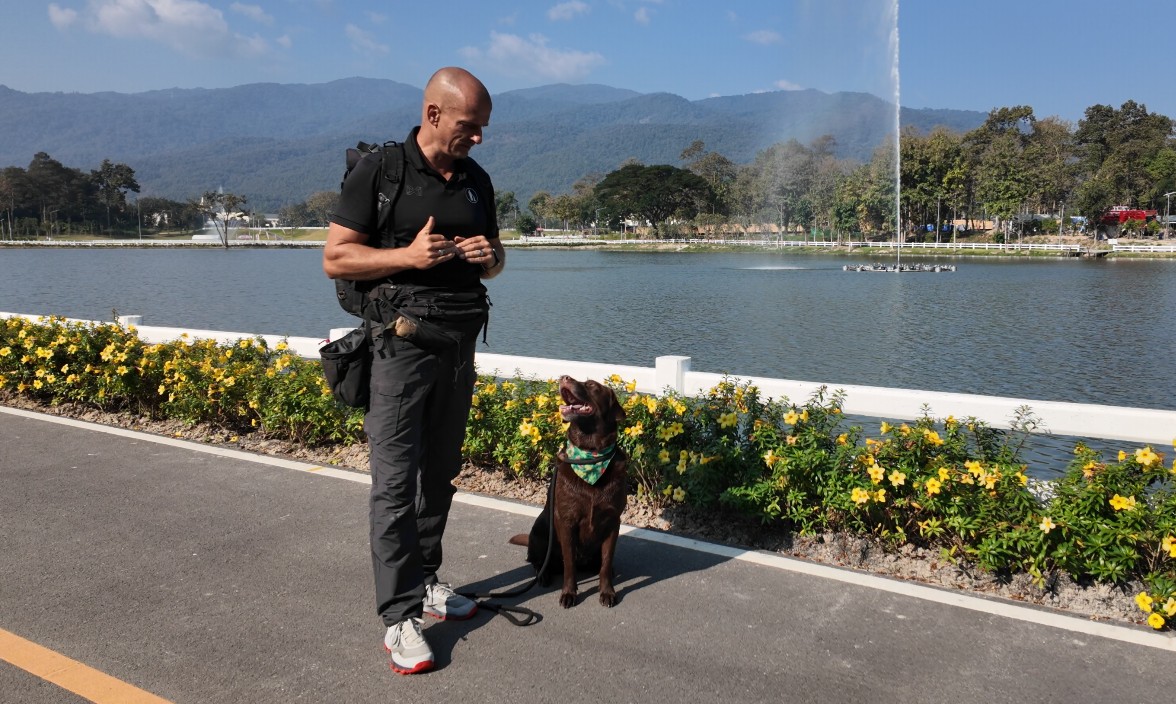
Understanding the struggle strengthens your bond.
By recognizing cognitive dissonance in your dog, you move beyond commands and correction—toward empathy, communication, and lasting behavioural resilience.
Nutritional Recommendations: The Gut-Brain Connection
How Diet Affects Cognitive Function
Nutritional neuroscience reveals surprising connections between what your dog eats and their ability to process conflicting information. Certain nutrients directly impact neurotransmitter production and cognitive flexibility:
- Omega-3 fatty acids support neural communication and stress resilience
- B-vitamins aid in neurotransmitter synthesis
- Antioxidants protect against stress-induced cellular damage
- Tryptophan influences serotonin production and emotional regulation
Blood sugar stability plays a crucial role in cognitive function. Dogs experiencing blood sugar fluctuations may show increased irritability and decreased ability to cope with conflicting stimuli. Feeding schedules and food composition directly impact your dog’s cognitive resilience.
The microbiome connection represents an emerging field in understanding canine behaviour. Research suggests that gut bacteria influence mood, stress response, and cognitive flexibility through the gut-brain axis. A balanced, species-appropriate diet supports both digestive health and cognitive function.
Supplements for Cognitive Support
Evidence-based supplementation can support dogs experiencing chronic stress from cognitive dissonance:
- L-theanine: Promotes calm focus without sedation
- Adaptogenic herbs: Help balance stress response systems
- Probiotics: Support gut-brain communication
- CBD products: May reduce anxiety in some dogs (consult your vet)
Remember that nutritional interventions work best as part of a comprehensive approach including training, environmental management, and veterinary care. 🧡
Health Concerns: When Cognitive Dissonance Becomes Problematic
Chronic Stress and Its Physical Impact
The physiological cost of prolonged cognitive dissonance can manifest in various health issues. Dogs repeatedly experiencing unresolved internal conflicts may develop:
- Gastrointestinal problems including chronic diarrhea or vomiting
- Skin conditions from excessive licking or scratching
- Immune system suppression leading to frequent infections
- Cardiovascular strain from chronic stress hormone elevation
Behavioural health deterioration often follows extended periods of cognitive dissonance. Dogs may develop compulsive behaviours, aggression, or withdrawal as coping mechanisms. These secondary problems can become more challenging to address than the original conflict.
Sleep disruption represents another often-overlooked consequence. Dogs experiencing cognitive dissonance may show restless sleep patterns, frequent waking, or inability to fully relax even in safe environments. Quality sleep is essential for cognitive processing and emotional regulation.
Medical Conditions That Mimic Cognitive Dissonance
Neurological disorders can create behaviours that appear like cognitive dissonance but have organic causes:
- Canine Cognitive Dysfunction (doggy dementia) causes confusion and contradictory behaviours
- Seizure disorders may include pre-ictal behaviour changes
- Brain tumors can affect decision-making and emotional regulation
- Vestibular disease creates disorientation that mimics conflict
Pain-related behavioural changes often masquerade as training issues or cognitive dissonance. A dog who previously loved car rides but now shows approach-avoidance behaviour might be experiencing pain when jumping in, creating a conflict between desire and discomfort.
Hormonal imbalances including thyroid dysfunction or adrenal problems can significantly impact behaviour and cognitive function. Always rule out medical causes before assuming behavioural contradictions stem from cognitive dissonance alone.
Lifestyle & Environment: Creating Consistency
Environmental Factors That Trigger Conflict
Multi-pet household dynamics create numerous opportunities for cognitive dissonance. Dogs must navigate:
- Resource competition versus social bonding
- Individual attention needs versus pack harmony
- Different rules or expectations from various human family members
- Territorial instincts versus sharing space
Urban versus rural challenges present different types of cognitive conflicts. City dogs face overstimulation and restricted movement, while rural dogs might struggle with wildlife encounters that trigger conflicting drives. Understanding your specific environmental challenges helps in creating management strategies.
Seasonal and routine changes can destabilize dogs who rely on predictability. Moving homes, family schedule changes, or even daylight savings time can trigger cognitive dissonance as dogs struggle to adapt their expectations to new realities.
Designing a Conflict-Reduced Living Space
Physical environment modifications can significantly reduce cognitive dissonance triggers:
- Clear boundaries using baby gates or furniture arrangement
- Dedicated safe spaces where dogs can retreat without conflict
- Predictable resource locations for food, water, and toys
- Visual barriers to reduce overstimulation
Routine as anxiety prevention helps dogs predict and prepare for daily events. Consistent schedules for:
- Feeding times
- Walk schedules
- Training sessions
- Rest periods
Enrichment without overwhelm requires balancing stimulation with your dog’s capacity to process it. Too many choices can create decision paralysis, while too few lead to boredom and frustration. Rotate toys and activities to maintain interest without creating conflict.
Senior Care: Cognitive Changes in Aging Dogs
Age-Related Cognitive Decline
Distinguishing normal aging from dysfunction helps identify when senior dogs need extra support. Normal aging might include:
- Slower decision-making
- Increased caution with new experiences
- Preference for routine over novelty
However, Canine Cognitive Dysfunction represents a more serious condition affecting 28% of dogs aged 11-12 and 68% of dogs aged 15-16. Symptoms that might be mistaken for cognitive dissonance include:
- Getting “stuck” in corners or behind furniture
- Failure to recognize familiar people or pets
- House training regression
- Disrupted sleep-wake cycles
Supporting cognitive health in senior dogs requires a multi-modal approach combining medical intervention, environmental modification, and adjusted expectations. Mental stimulation remains important but should be tailored to your senior dog’s processing speed.
Adapting Training for Senior Dogs
Simplifying to reduce conflict helps senior dogs succeed despite cognitive changes:
- Break complex behaviours into smaller components
- Increase reward frequency to maintain motivation
- Allow more processing time between commands
- Use higher-value rewards to overcome decreased food drive
Managing sundown syndrome in dogs mirrors similar phenomena in humans with dementia. Evening confusion and agitation may represent temporal cognitive dissonance as dogs struggle to orient themselves in changing light conditions. Maintaining consistent lighting and evening routines can help.
Compassionate accommodation means accepting that some behavioural contradictions in senior dogs stem from cognitive decline rather than training issues. Patience and environmental management often work better than attempting to retrain behaviours that confusion has disrupted. 🐾
Conclusion: Is Understanding Cognitive Dissonance Right for You?
As we’ve explored throughout this comprehensive guide, the question isn’t simply whether dogs experience cognitive dissonance, but rather how we can recognize and respond to their unique forms of internal conflict. Your dog’s contradictory behaviours tell a story—one of competing instincts, learned behaviours, emotional responses, and sometimes, underlying health concerns.
Understanding cognitive dissonance in dogs empowers you to:
- Recognize subtle signs of internal conflict before they escalate
- Adjust training approaches to reduce confusion and stress
- Create environments that minimize contradictory signals
- Respond with compassion to behavioural challenges
- Distinguish medical issues from behavioural conflicts
Remember that every dog is unique in how they process and express internal conflicts. What creates cognitive dissonance for one dog might be easily navigated by another. Factors including breed tendencies, individual temperament, past experiences, and current health all influence how your furry friend handles contradictory situations.
Moving forward, observe your dog with fresh eyes. Those moments of hesitation, displacement behaviours, or seemingly stubborn responses might actually be your companion wrestling with conflicting motivations. By recognizing these moments and responding with consistency, patience, and understanding, you strengthen the trust between you and help your dog navigate their complex emotional world.
Whether you’re a professional trainer working with challenging cases, a devoted owner seeking to understand puzzling behaviours, or someone considering adopting a dog with a complex history, knowledge of canine cognitive dissonance enhances your ability to provide supportive, effective care. Your awareness and responsive approach can transform moments of conflict into opportunities for deeper connection and mutual understanding.
The journey of understanding your dog’s mind—with all its beautiful contradictions—is one of the most rewarding aspects of the human-canine bond. Embrace the complexity, celebrate the small victories, and remember that every step toward reducing your dog’s internal conflicts is a step toward their greater happiness and wellbeing. 🧡

